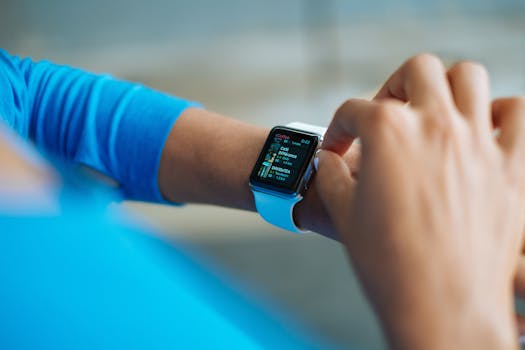
The Future of Health Tech: Wearables and Gadgets in 2025
The Future of Health Tech: Wearables and Gadgets in 2025 is an exciting and rapidly evolving field that is transforming the way we approach healthcare. With the rise of wearables and gadgets, individuals are now able to take a more active role in monitoring and managing their health. In this article, we will explore the latest trends and innovations in health tech, including the benefits and challenges of using wearables and gadgets in healthcare.
Introduction to Wearables and Gadgets
Wearables and gadgets have become increasingly popular in recent years, with many people using them to track their fitness and health. These devices can track a range of metrics, including heart rate, blood pressure, and sleep patterns. They can also provide notifications and reminders to help individuals stay on top of their health and wellbeing.
Some of the most popular wearables and gadgets on the market include smartwatches, fitness trackers, and health monitors. These devices are often equipped with advanced sensors and algorithms that can provide detailed insights into an individual’s health and wellbeing.
Benefits of Wearables and Gadgets in Healthcare
There are many benefits to using wearables and gadgets in healthcare. One of the main advantages is that they can provide individuals with a greater sense of control and agency over their health. By tracking their metrics and receiving notifications and reminders, individuals can take a more active role in managing their health and wellbeing.
Wearables and gadgets can also help to improve health outcomes by providing early warnings and detection of potential health problems. For example, a smartwatch can detect irregular heart rhythms and alert the wearer to seek medical attention.
In addition to these benefits, wearables and gadgets can also help to reduce healthcare costs by reducing the need for hospitalizations and medical interventions. By providing individuals with the tools and insights they need to manage their health, wearables and gadgets can help to prevent health problems from arising in the first place.
Challenges and Limitations of Wearables and Gadgets
While wearables and gadgets have the potential to revolutionize healthcare, there are also several challenges and limitations to their use. One of the main challenges is ensuring the accuracy and reliability of the data they provide.
Another challenge is ensuring that individuals use wearables and gadgets in a way that is safe and effective. This can be a particular concern for individuals who are new to using these devices, as they may not be aware of the potential risks and limitations.
In addition to these challenges, there are also concerns about the privacy and security of the data provided by wearables and gadgets. As these devices become increasingly sophisticated, there is a growing risk of data breaches and cyber attacks.
Future of Health Tech: Trends and Innovations
As we look to the future of health tech, there are several trends and innovations that are likely to shape the industry. One of the main trends is the increasing use of artificial intelligence (AI) and machine learning (ML) in healthcare.
AI and ML have the potential to revolutionize healthcare by providing personalized and predictive insights into an individual’s health. They can also help to improve health outcomes by identifying potential health problems early and providing targeted interventions.
Another trend is the increasing use of virtual and augmented reality (VR/AR) in healthcare. VR/AR has the potential to provide immersive and interactive experiences that can help to improve health outcomes and enhance the patient experience.
Conclusion
The Future of Health Tech: Wearables and Gadgets in 2025 is an exciting and rapidly evolving field that is transforming the way we approach healthcare. While there are several benefits to using wearables and gadgets, there are also challenges and limitations to their use. As we look to the future of health tech, it is likely that we will see increasing use of AI, ML, and VR/AR, as well as a growing focus on personalized and predictive medicine.



